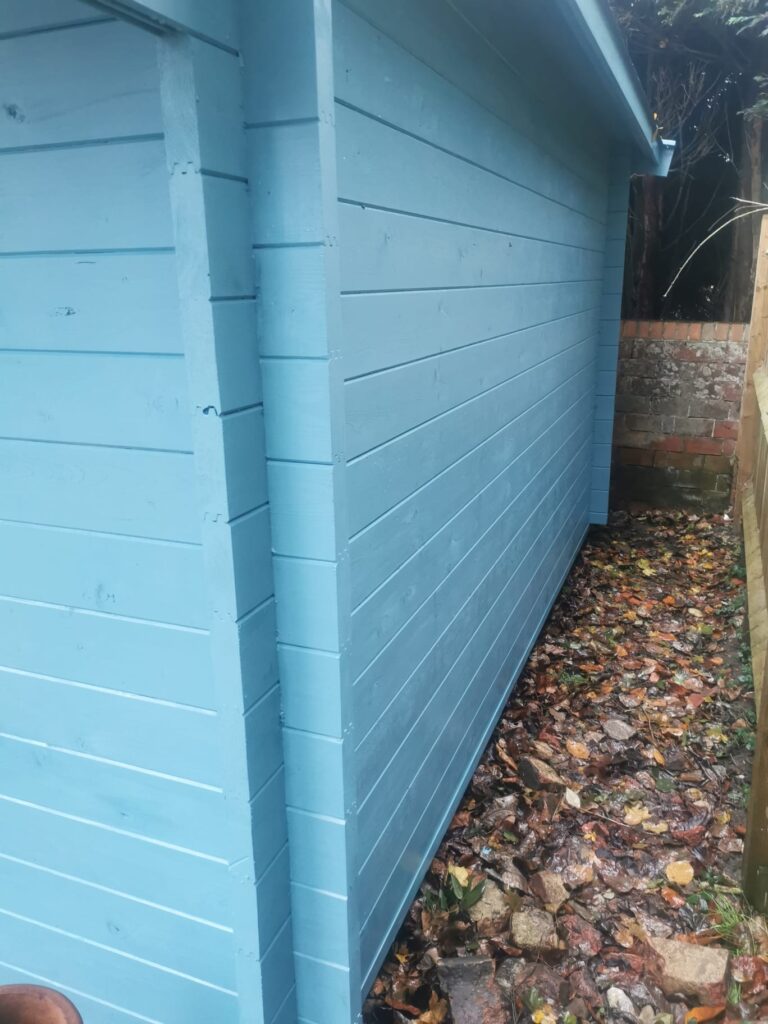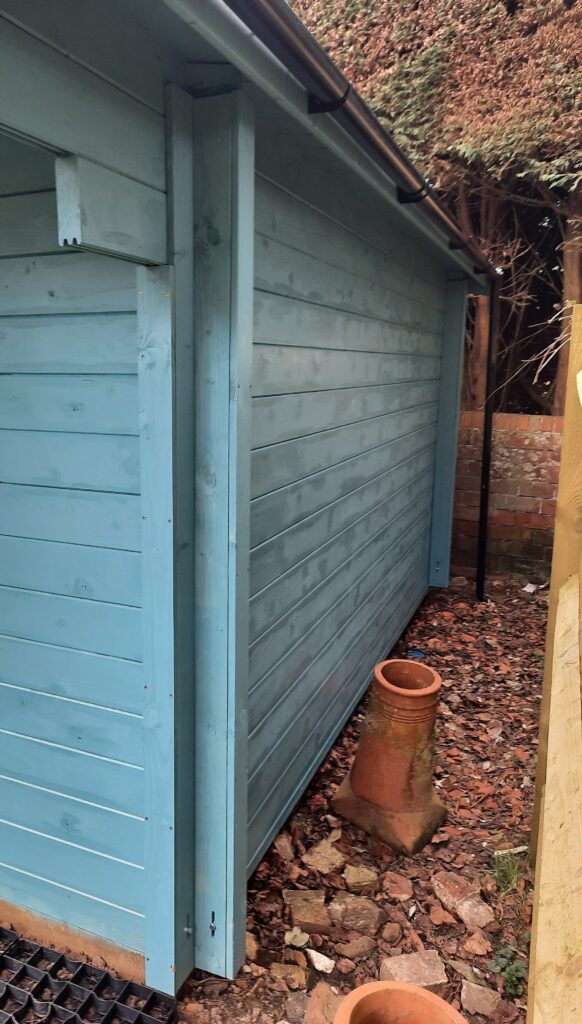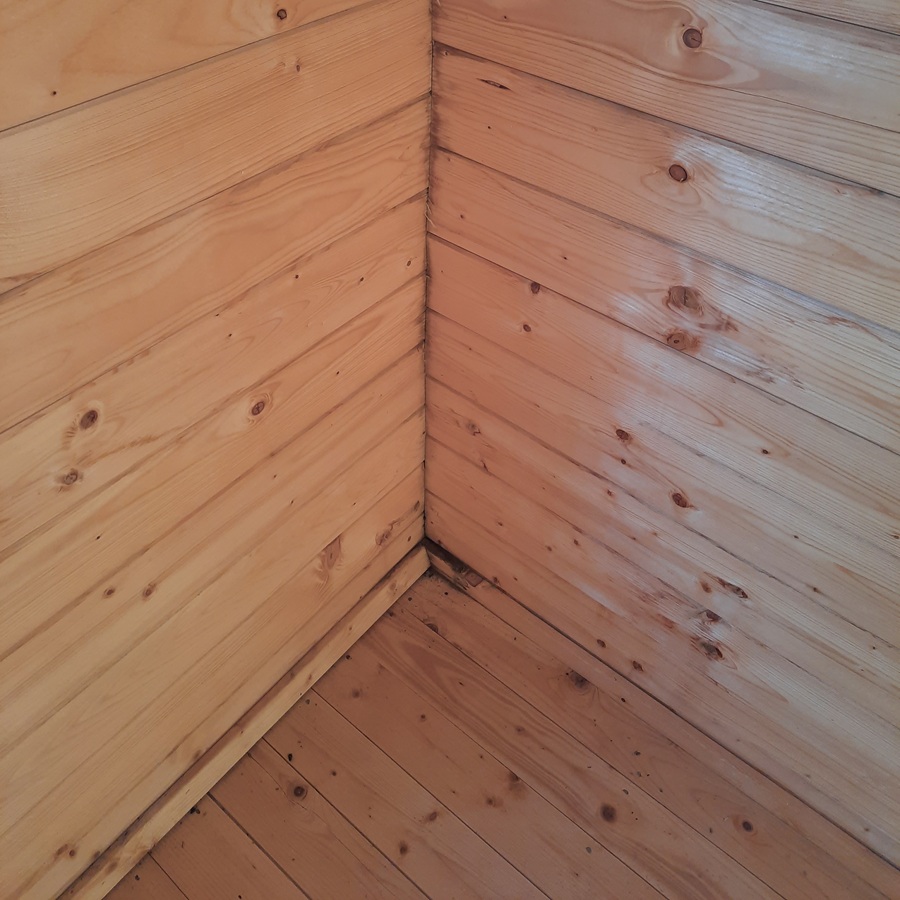Garden cabin column corners help protect the most vulnerable part of an interlocking cabin – the corner joints. Regardless of the type of joint used and how tight the joints are, a driving rain will penetrate these joints to some degree. Even tight joints can be vulnerable to capillary action.
Hortons carry out repair work on log cabins all the time. Nearly every log cabin that we repair has some deterioration around the corner joints. The worst being at the bottom as these are much more likely to catch rain. And also be vulnerable to rain water bouncing back up off the ground. This is quite often 2 fold –
- Rain purely hitting the ground next to the cabin and rebounding against the cabin walls.
- Rain water running off the roof, hitting the ground and rebounding against the cabin. This is a concentrated amount of water and will have a big detrimental affect over time, especially if there are hard surfaces around the cabin. An over-sized base or pathway running alongside the cabin, for instance.
Adding guttering will make a huge difference to the long term life of your cabin. This will stop the water cascading from the roof.
Column Corners
However, you can take other steps to help alleviate this. The easiest starting point are our column corners. This “boxes” the corners in to stop the weather getting to them to start with. Column corners need to be fixed using sliding joints as log cabins rise and fall through the seasons. Therefore we use slots to still allow the logs and cabin to move up and down. If you build your cabin in a very exposed position, column corners will help to protect them. Driving rain will penetrate into the joints. Painting your garden room regaularly will definitely help. You should makes sure that you work multiple layers of stain or paint into the corner joints as a minimum. Not weatherproofing your log cabin corner joints means it will start to show signs of damp in the corners.
This is a standard log cabin corner –

This is the same cabin but now fitted with column corners and guttering –

As you can see, the column corners now protect the end grain (another vulnerable part of a log cabin), which will make the cabin last much longer. Note the slotted fixings at the bottom to let the cabin rise and fall through the seasons. We quite often fit these to log cabins that we are repairing, such as this Twin Skin –

We also fitted uPVC windows and doors to this cabin as well as painting it.
It is more obvious with older cabins that they require column corners because there are signs of dark wood. These dark areas are generally a symptom of damp penetrating into the corners from outside. This then shows on the insides of the corners. Another tell-tale sign are dark patches on the skirting boards….

These dark patches might not be very obvious if you decorate the cabin walls inside, as this masks the discolouration. However, if there is the slightest sign of damp showing through the paint then rest assured, damp is getting through.

